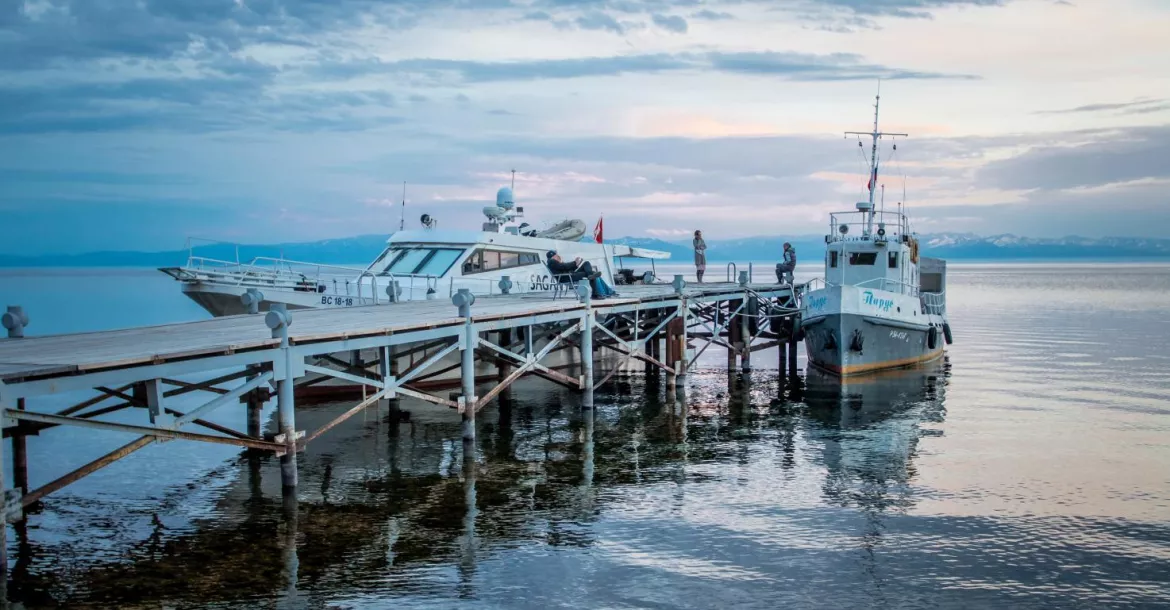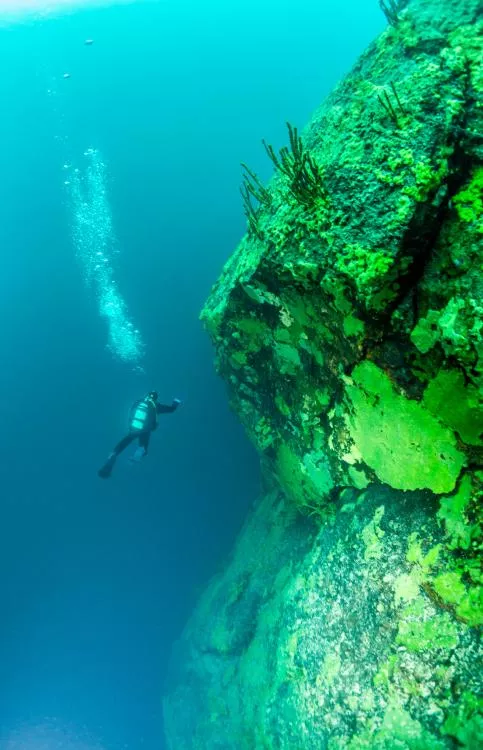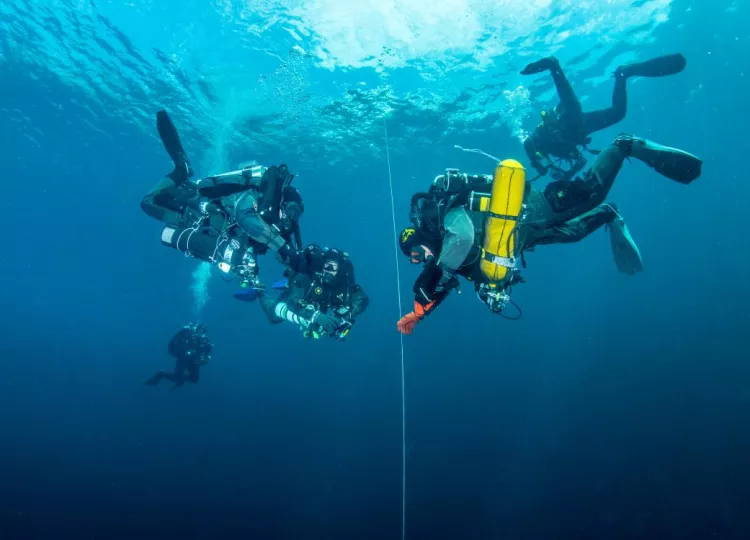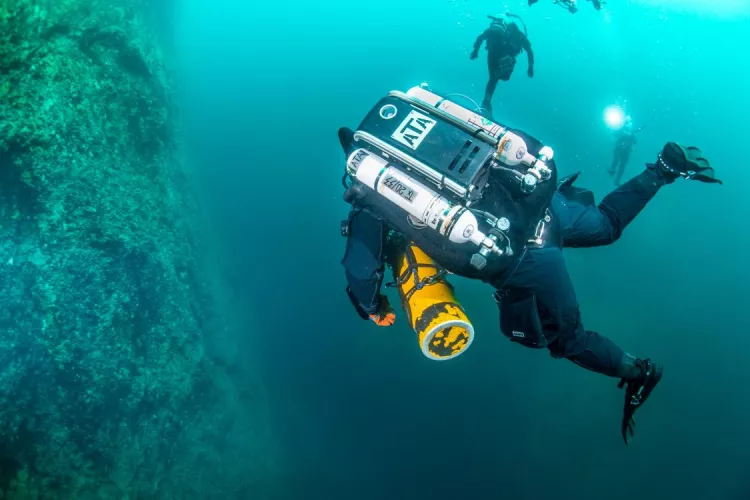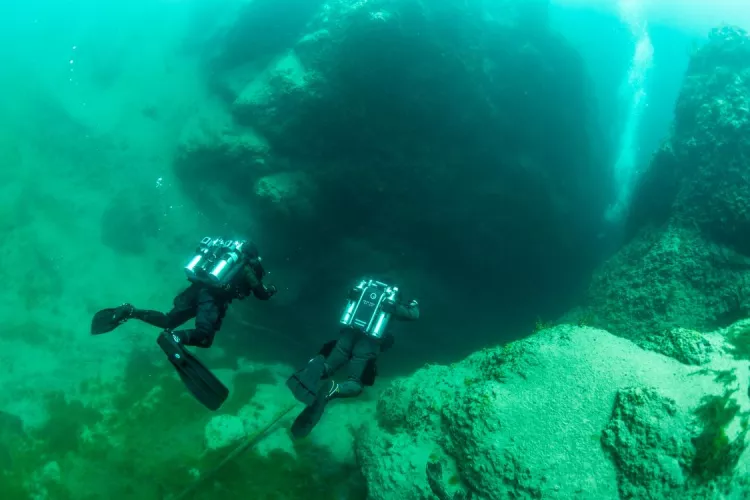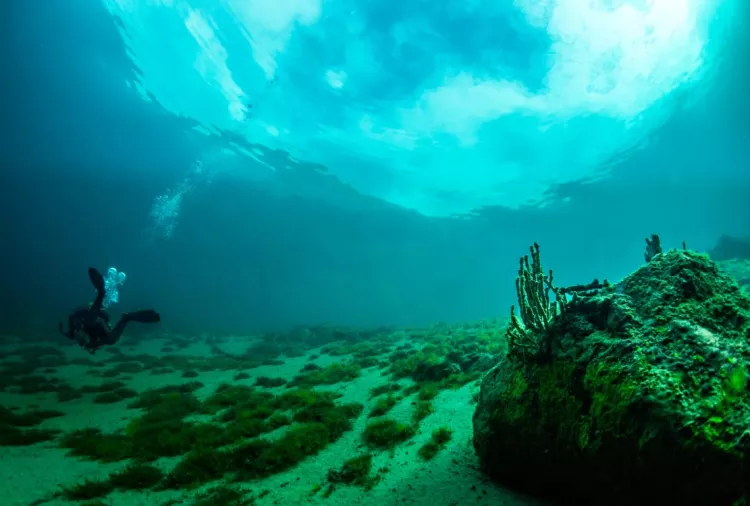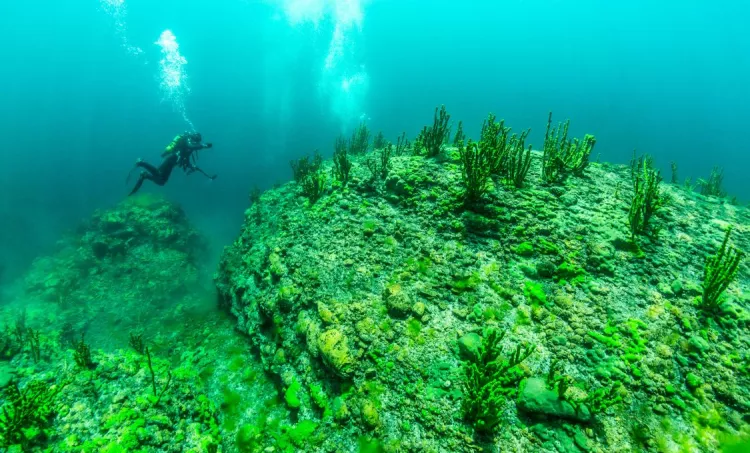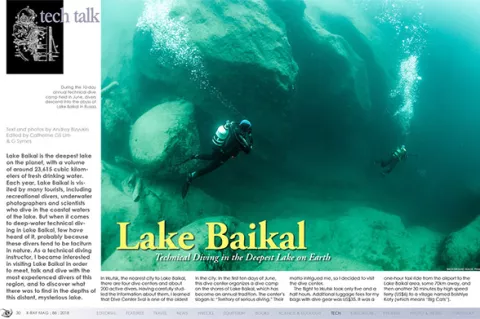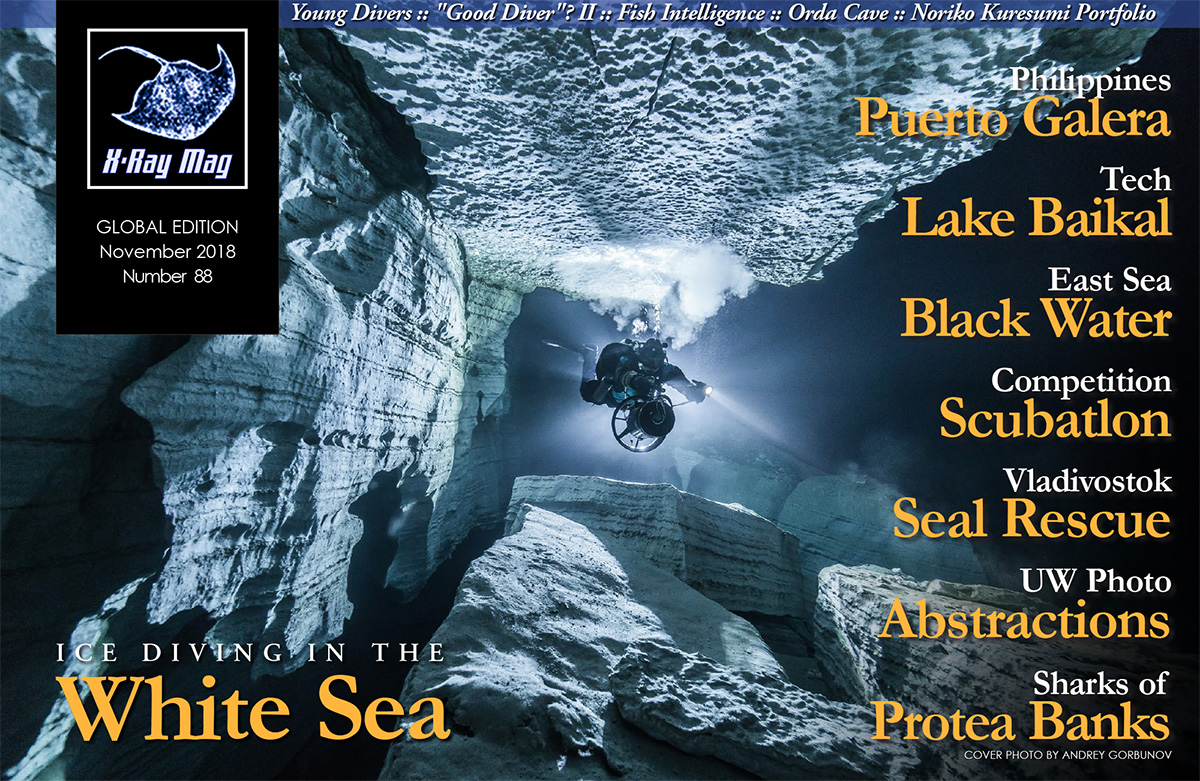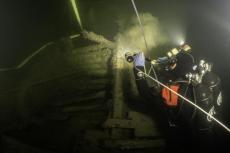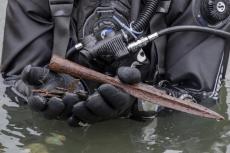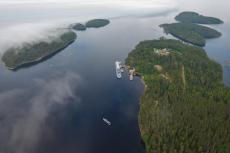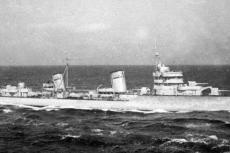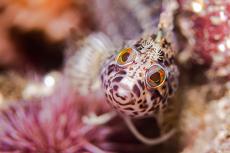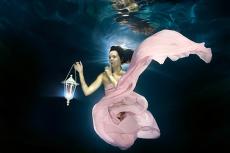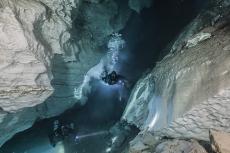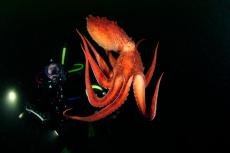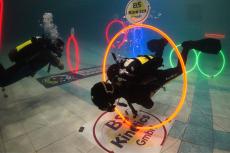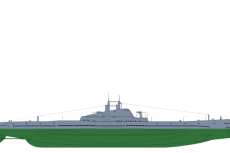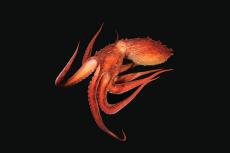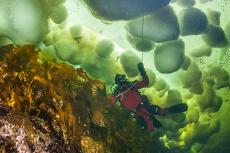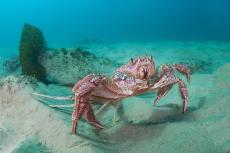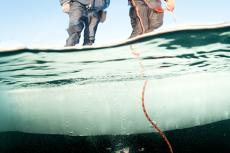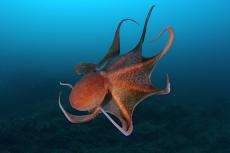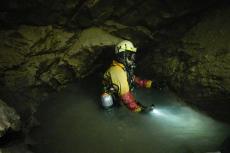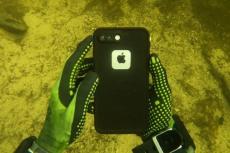Lake Baikal is the deepest lake on the planet, with a volume of around 23,615 cubic kilometers of fresh drinking water. Each year, Lake Baikal is visited by many tourists, including recreational divers, underwater photographers and scientists who dive in the coastal waters of the lake. But when it comes to deep-water technical diving in Lake Baikal, few have heard of it, probably because these divers tend to be taciturn in nature. As a technical diving instructor, I became interested in visiting Lake Baikal in order to meet, talk and dive with the most experienced divers of this region, and to discover what there was to find in the depths of this distant, mysterious lake.
Contributed by
In Irkutsk, the nearest city to Lake Baikal, there are four dive centers and about 200 active divers. Having carefully studied the information about them, I learned that Dive Center Sval is one of the oldest in the city. In the first ten days of June, this dive center organizes a dive camp on the shores of Lake Baikal, which has become an annual tradition. The center’s slogan is: “Territory of serious diving.” Their motto intrigued me, so I decided to visit the dive center.
The flight to Irkutsk took only five and a half hours. Additional luggage fees for my bags with dive gear was USD 35. It was a one-hour taxi ride from the airport to the Lake Baikal area, some 70km away, and then another 30 minutes by high speed ferry (USD 6) to a village named Bolshie Koty (which means “Big Cats”).
Bolshiye Koty is known as a mid-19th century gold-mining town. It is found in a very clean, pristine area; indeed, it is the location of Baikal National Park, which comprises a unique forest—Baikal Taiga. There are no roads here. You can only get to the area via quad bike along the lake shore, by ferry, or over the ice on the lake in wintertime. About 100 people live in the village year-round. Others come to the village just during the summertime. Upon first glance, the locals look like hard people, but they are actually quite friendly and are happy to talk to visitors. They are descendants of gold miners, intellectuals and exiles. There is also a shop and a library in town. The real riot of spring comes to Bolshiye Koty at the beginning of June, bringing with it lots of bright sunlight, beautiful weather and warmth, as well as flowers flowering everywhere.
On the pier of Bolshiye Koty, I was met by Andrey Dimitrevich, who heads Dive Center Sval. A professional diver and IANTD/TDI technical diving instructor with over 30 years of diving experience, he is the director of the dive camp in Bolshiye Koty. He said that it is here that around 45 divers from different locations have come each year since 2000 to take part in the dive camp. Their goals focus on recreational and technical diving, diving equipment testing, skills development, communication and exchange, sharing their experiences within each of these aspects of diving.
During the dive camp, one can receive training in beginner to advanced levels of diving, from Open Water certification to deep-water trimix and rebreather courses. Life in the camp is subject to a daily rhythm to which one must adjust. There is a common kitchen for meals, a common briefing, dive instruction, preparation of equipment, technical and rebreather dives. Here, you can dive into what interests you most.
The dates of the dive camp were not chosen by chance. The best time to dive here is 10 days starting from the first weekend of June. Immediately after the ice melts in May, the waters in Lake Baikal become very cold and very muddy. Then, the ice-cold meltwater begins to sink to the depths of the lake, while clear and not-as-cold water rises to the surface of the lake. The water in the lake gradually clears, and visibility can reach 30 to 40m, until the middle of June. Also, in June, there is little wind, so the lake is calm and conducive for diving.
Baikal’s underwater world
So, what is it like underwater in Lake Baikal? Well, essentially, it is a giant crack between the tectonic plates of the Asian continent—a crack with a depth of 1,642m, filled with water. The underwater landscape in the Bolshiye Koty area makes it easy for divers to descend to deeper depths near to shore, and then upon ascent, take decompression stops along its steep vertical walls. Nine convenient dive sites are scattered for several kilometers along the shore of the lake. You can dive from the shore or from a boat. The choice of dive site depends on weather, wind direction and the waves on the lake.
There is a narrow coastal strip along the lake bottom covered with picturesque green sponges, which look like plump underwater cacti from the desert, abruptly breaking into the darkness of the abyss. Then there are canyons, steep vertical walls, steeply inclined underwater tunnels and grottoes or caves. The lake bottom’s topography is also dotted with detached rocks and boulders.
Technical diving
Every year, more and more divers are interested in doing technical dives and deep-water decompression dives using gas mixtures. Lake Baikal is a good choice for the technical diver. Here, you can test yourself, your equipment, new methods of diving and explore the underwater world of the deepest lake on Earth.
As a connoisseur of Lake Baikal, Dimitrevich believes that divers who are drawn to taking risks should not engage in technical diving here. Lake Baikal is a place for divers who do not take risks; it is not a place for extreme divers. Technical diving in Lake Baikal requires cool level-headed thinking, maticulous calculation, and careful planning of dives. There's no room for bravado.
Special requirements
In the warmest season (from August to September) at a depth of 30m, water temperatures are around 10°C, and at depth, are reduced to 4°C. During other times of the year, the water is even colder. In wintertime, the water temperature is zero degrees; and in the summer, one must adjust to an average water temperature of 4°C. So, in order to endure one to two hours of decompression time, you will need to use a drysuit, warm undergarments and electric heating, and to inflate your suit with argon. In cold water, a battery can discharge quickly and electric heating will stop working, so your drysuit should be large enough for you to be able to wear a second undergarment under it.
Deep diving on Lake Baikal pushes the limits of equipment capabilities. Dive regulators should be frost protected, cold-water models adapted to cold-water diving. Inflators of BCDs should be serviced to withstand freezing. To avoid ice formation, all equipment must be dry before diving in sub-zero air temperatures.
Rebreathers
The use of closed circuit rebreathers offers great advantages. Rebreathers provide divers with a large supply of breathing mixture for long decompression dives, and breathing warm gas warms the diver, providing added comfort. The future of deep, long and safe dives at Lake Baikal definitely belongs to rebreathers.
Currently, the most popular rebreather here is the Poseidon MK6. Poseidon offers unique dive training with their rebreather units, so even a beginner in an Open Water course can be trained on a rebreather—everyone likes this idea. During the dive camp at Lake Baikal, you can take any dive course with a Poseidon rebreather, from the beginner level to the hypo-trimix level (with "black battery" dongle or key) to a depth of 100+ meters. Hundreds of divers have been trained at Lake Baikal, and now they dive here in accordance with international standards set by training agencies such as PADI, IANTD, TDI, SSI and CMAS.
I asked Dimitrevich why the dive center has so much Poseidon equipment. He told me that in their search for the most reliable equipment, the dive center chose the brand through trial and error. They tested a lot of different regulators by diving to depth with them and waiting for the regulator to freeze and go into "free flow." Almost all the regulators they tested froze sooner or later, except for one—the Poseidon Jet Stream regulator, even in wintertime and under the ice. Therefore, divers on Lake Baikal prefer regulators by Poseidon, so they can forget those extra thermoses of hot water brought along to defrost frozen regulators.
Diving to the Cross
One day during the dive camp, we dived the site named The Cross. Here, there is a huge Orthodox cross made of Siberian larch, set underwater on top of a free-standing rock at a depth of 15m, about 300m from shore. This cross was put here by divers in memory of Andrew Serov, the founder of Dive Center Sval.
The first group of rebreather divers to dive the site placed a buoy on the top of some rock and descended to a depth of 60m. After them, we jumped into the water, swam to the buoy and started to descend. The visibility of the water was fantastic! Two rocky peaks rising from the depths of the lake were visible in the crystal-clear, blue water. On top of one of them stood a wooden cross. The first group of divers was already moving around it.
The scene was absolutely beautiful. I have never dived in such a magnificent underwater temple before. We descended down to the level of the rocks to have a look at the cross, read the words of remembrance on the memorial and go deeper into the crevice. The narrow gap between the rocks was somewhat similar to the entrance to an underwater cave. It was narrow and dark.
I moved around the rock clockwise, swam out to open water, raised my eyes to the surface and froze with awe. Everything could be seen in one glance. Our boats floated above us on the water’s surface and the next group of divers was descending directly to the cross. The water visibility was so good that I could distinguish even the smallest elements of their dive equipment. I took pictures, checked my gas pressure and saw that it was time to ascend. On the way to the surface, I took photos of the divers on their decompression stop. Once again, I admired the beauty of this spiritual dive site and rose to the surface.
What people are saying
Technical diving, especially in cold water, was once an activity taken up primarily by men; but here in the camp, I met many women. One of them, Galina, a diver from Kamchatka and a mother of three children, was a rebreather diver and a cave diver. It was her third time participating in the dive camp, and she dived together with her husband. She said that she believes that diving with a rebreather is much easier for women than diving with a heavy twinset on one’s back. There are no noisy bubbles, breathing warm air keeps her warm, and she is not tired after diving with a rebreather, she said. With a rebreather, her diving became much more comfortable. Galina said she likes technical diving. She likes the lake. The abyss beckons her, and she likes to dive deep. She also likes the underwater canyons, green sponges and little fishes. Of course, there are more male divers in the camp, she said, but all the participants are very friendly to one another. And she dreams of having special women's equipment one day!
Dmitry, a divemaster from Irkutsk, told me what Siberian divers think about Lake Baikal. He said Lake Baikal is like a character in a Siberian folk tale—the sun in the morning and a storm in the evening! It is not necessary to dive deep in Lake Baikal. A depth of 25 to 30m is enough to understand the delicate ecology of the lake, to see its green sponges, to pass through its thermoclines, to dive into its darkness and look into the eyes of the abyss.
There is something mythical, fabulous and mysterious here. Locals believe that all the spirits of the world live in the abyss of Lake Baikal. They believe it can make strong people even stronger, but weak people, it may break. Lake Baikal seems a place of bottomless depths, scale and colors. One feels like a drop of water here, in the deepest lake of the world. Baikal is harsh. Local divers treat it like a living creature. The lake requires respect. It expects concentration from divers, responsibility for themselves and for their buddies. Only then is the lake ready to reveal the beauty in its depths.
The dive camp in Bolshiye Koty is a great place for exchange between divers, from those new to diving to experienced divers and instructors. Some divers do their training here, and the day after, make decompression dives to a depth of 60m; some take photographs of the lake’s underwater landscapes; and some come here just to start learning to dive—but all like it. The number of divers participating is steadily increasing. Every year, it is necessary for the organizers to bring more and more gases, cylinders, compressors and additional boats.
Afterthoughts
A week of unforgettable dives here felt like it flew by in an hour. I was already on my way back home, but on the plane, I wanted to go back, drive along the perimeter of Lake Baikal again, and dive in new and different parts of this magical lake. On my bucket list, Baikal is one of the top five dive sites in the world. Therefore, every self-respecting diver should want to dive at least once in Lake Baikal. ■

